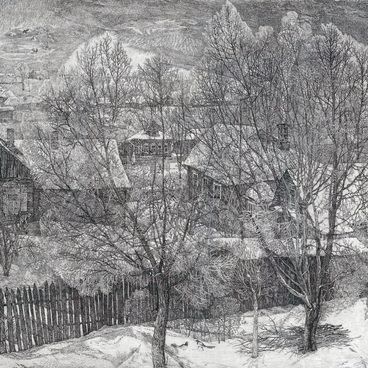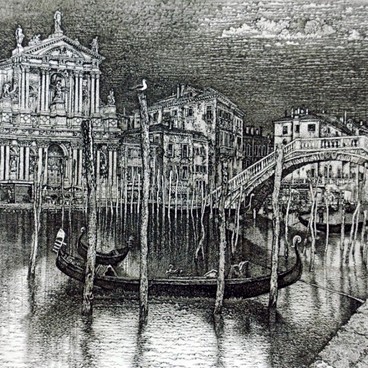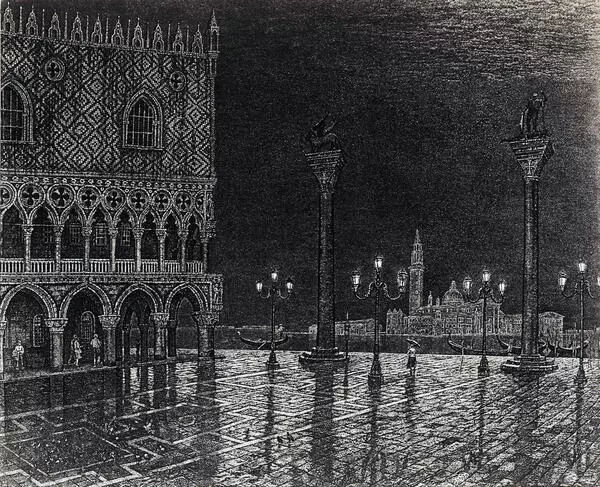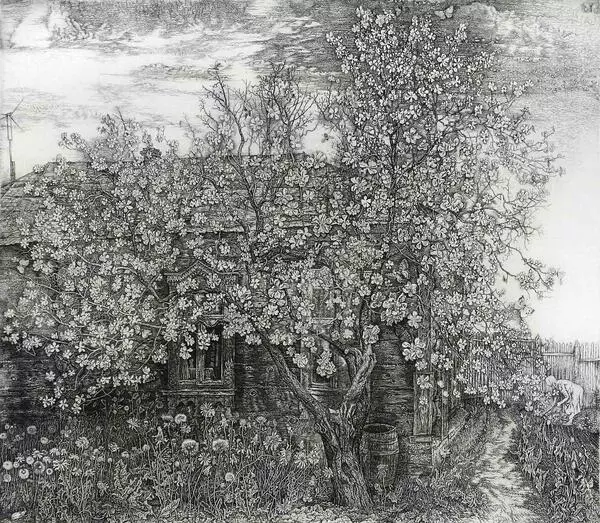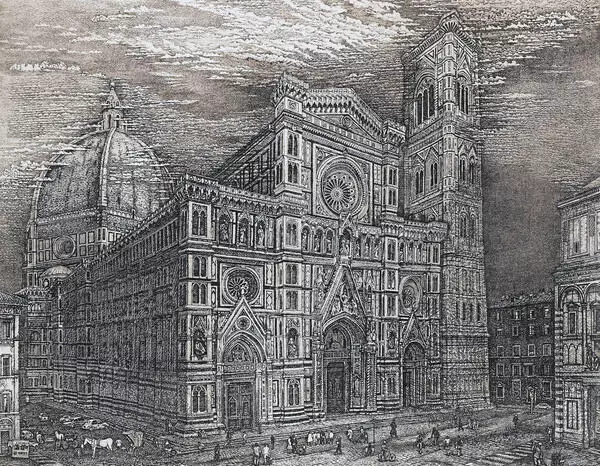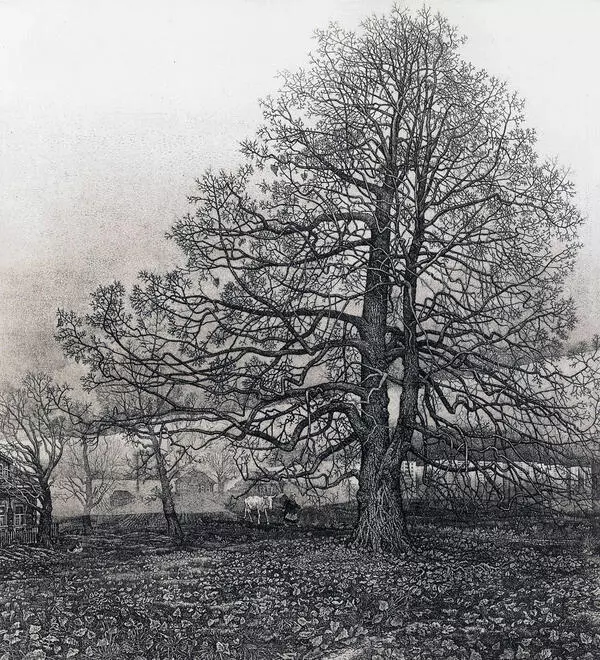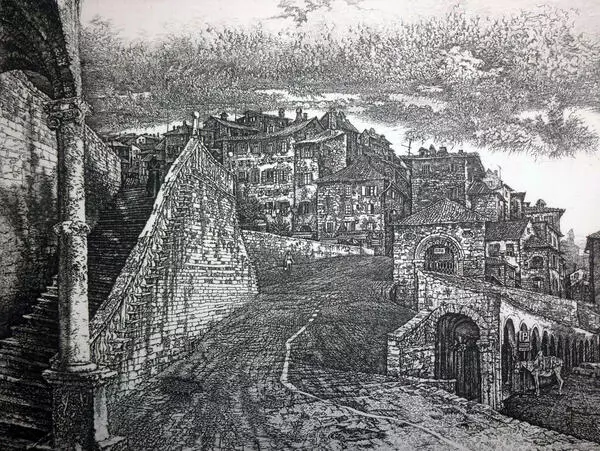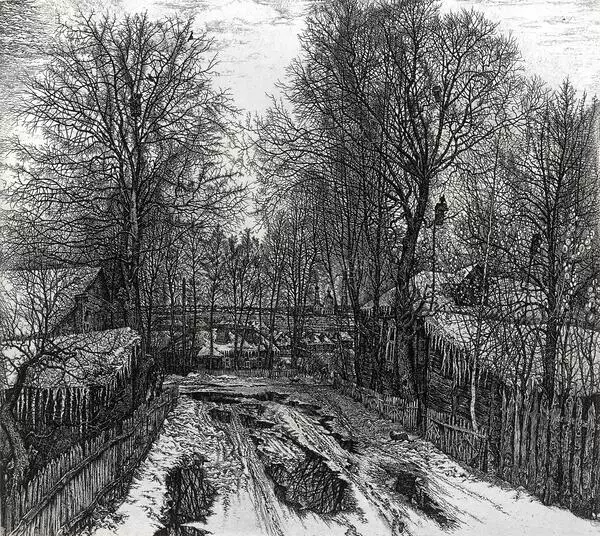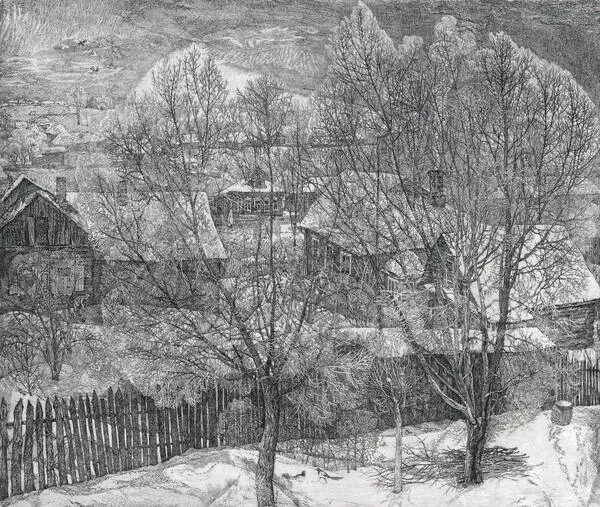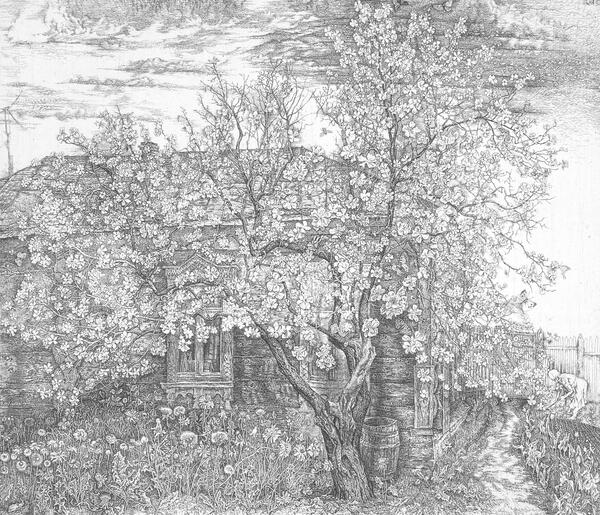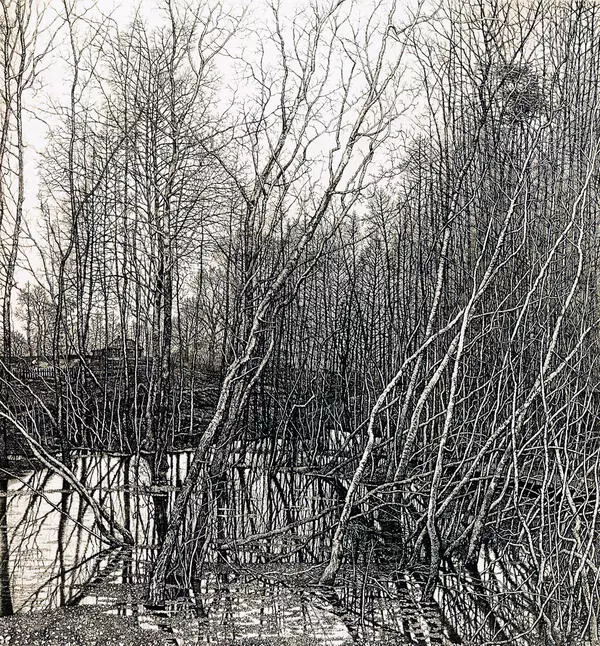The “Spring Landscape” by Stanislav Mikhailovich Nikireev reflects his favorite motifs — deserted villages, the outskirts of provincial towns, where buildings and roads exist in natural harmony and interaction with the terrain and its vegetation.
The figures of people and animals on the etchings are intertwined by the artist in the silver lace of his compositions, which creates certain dynamics in the whole picture: through the trees growing on the shore of the pond, one can see a road, a rolling cart, a silhouette of a white horse and a train rushing away in the distance. Life buzzes in the bare treetops. There are nests swaying in the thin branches, and a bird flies to its nest. In this way, the artist emphasizes how much life there is in nature.
Stanislav Mikhailovich Nikireev was an outstanding master of etching. The work presented in the exhibition is distinguished by its fine and light technique, refined taste and striking artistic authenticity. Among other artistic merits of the etching worth noting is the way of depicting the graphic landscape, which seems to be divided into two parts. Above there is the main real composition, below — a mirror reflection of the trees dissolved in the clear sky. Thus, the artist combines in the etching, visually and symbolically, all natural elements that are an integral part of the general expression of the idea of life and interconnection in the universe.
Another remarkable technique often used by Nikireev is parallelism, through which the artist skillfully and originally conveyed historical continuity without, given the scene, being an opponent of technological progress. This is discernible if one looks closely at the train and the horse galloping in the same direction, symbolizing the bygone era and the present. There the artist succeeded in conveying all the beauty and identity of a passing era and the legitimate realities of a new age.
This is a classical version of etching, typical of Stanislav Mikhailovich Nikireev’s creative style, which combines most of the artist’s favorite techniques.
The figures of people and animals on the etchings are intertwined by the artist in the silver lace of his compositions, which creates certain dynamics in the whole picture: through the trees growing on the shore of the pond, one can see a road, a rolling cart, a silhouette of a white horse and a train rushing away in the distance. Life buzzes in the bare treetops. There are nests swaying in the thin branches, and a bird flies to its nest. In this way, the artist emphasizes how much life there is in nature.
Stanislav Mikhailovich Nikireev was an outstanding master of etching. The work presented in the exhibition is distinguished by its fine and light technique, refined taste and striking artistic authenticity. Among other artistic merits of the etching worth noting is the way of depicting the graphic landscape, which seems to be divided into two parts. Above there is the main real composition, below — a mirror reflection of the trees dissolved in the clear sky. Thus, the artist combines in the etching, visually and symbolically, all natural elements that are an integral part of the general expression of the idea of life and interconnection in the universe.
Another remarkable technique often used by Nikireev is parallelism, through which the artist skillfully and originally conveyed historical continuity without, given the scene, being an opponent of technological progress. This is discernible if one looks closely at the train and the horse galloping in the same direction, symbolizing the bygone era and the present. There the artist succeeded in conveying all the beauty and identity of a passing era and the legitimate realities of a new age.
This is a classical version of etching, typical of Stanislav Mikhailovich Nikireev’s creative style, which combines most of the artist’s favorite techniques.


